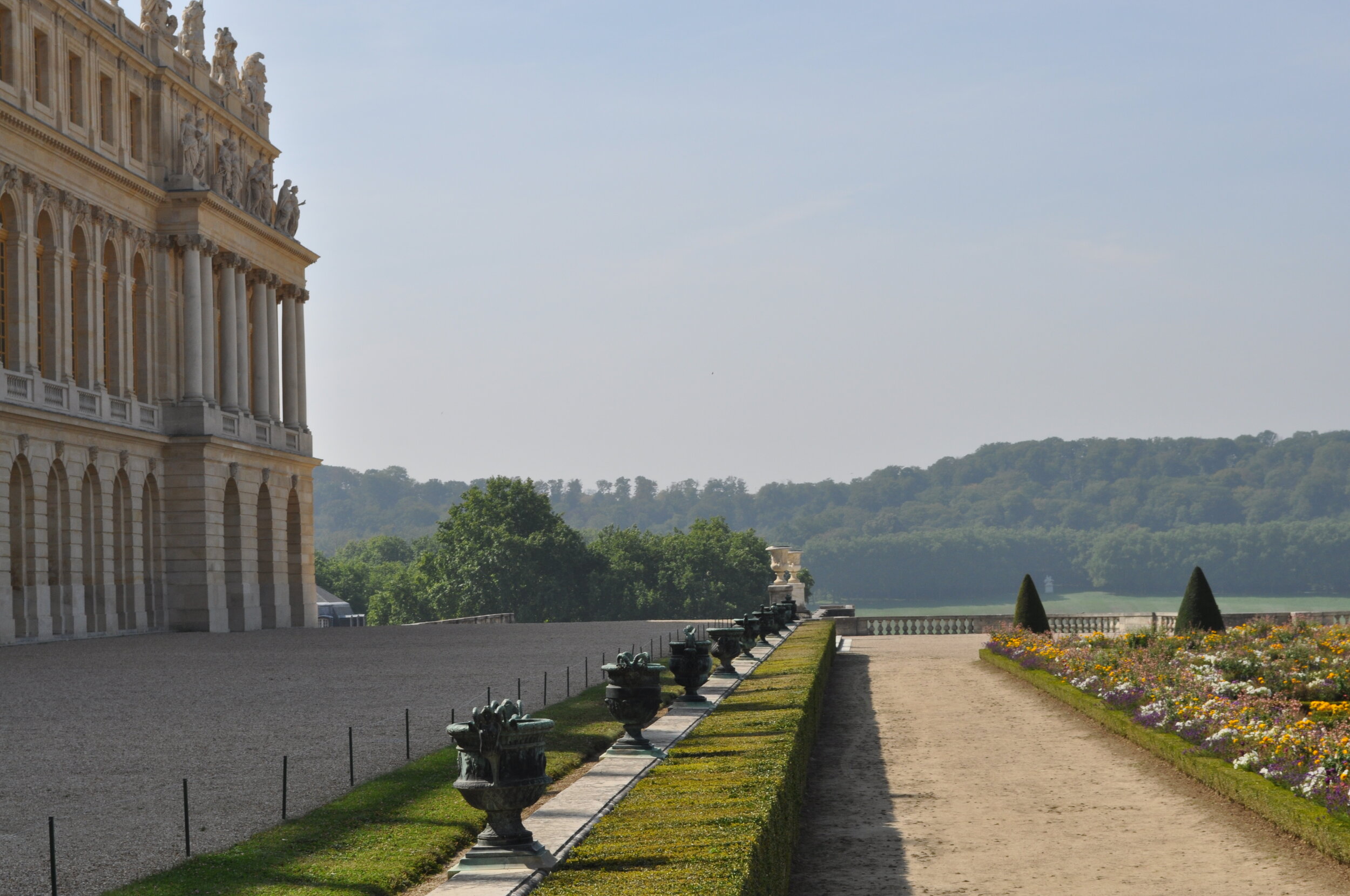
Inspired by French Gardens
August 24, 2020
When you walk across the grounds of a château in the Loire Valley, or in any park in Paris, you will sense a common theme emerge. In French gardens, there is an undeniable passion for order over nature. The grandfather of the French garden aesthetic, Andre LeNotre, was gardener to nobility and kings in the 17th century France. He made undeniably the greatest contribution to French landscape gardening with his designs that expressed both formality and scale, the greatest example of which is seen at Versailles. French nobility adopted grand scale gardening and a pleasing dominion over nature as a means to express their own power. Doing so demonstrated that they could bend nature to their will.
What makes French gardens (those designed by LeNotre and later those who were influenced by him) unique is that they all value order and structure, balanced by a sense of playfulness. While they may not always be symmetrical, they are always harmonious and balanced. The French garden is formal, yet romantic and charming. While one of the major elements of a French garden is magnitude, you can still create a French-inspired look on a smaller scale in your own backyard. Here are some the key garden design elements to make your own French-inspired garden.
Pea Gravel
As cost-effective as it is practical, pea gravel is ubiquitous in the French garden. The satisfying crunch underfoot creates a sensory memory that transports me back to France every time I cross it. It lines the footpaths leading around châteaux, and all the parks in Paris and was the obvious choice when landscaping around our house and in creating our little pea gravel patio.
Water
Perhaps the biggest key ingredient of a formal French garden is water. It is amazing to think that in the 1600s, the magnificient Apollo’s Fountain at Versailles was completed, a hydraulic engineering feat powered by gravity and reservoirs. The sound of water adds a welcoming dimension to any garden. We have a small fountain near our front door that attracts visiting birds and bees daily, and I love hearing the pleasing trickle when we open our windows.
Bosquet
From the Italian word bosco which is associated with a planted orchard, this French term refers to a formal planted area of at least five trees. A wonderful example is the rows of plane trees planted in gravel in the Jardin du Luxembourg, where you can marvel at perfect symmetry and classicism amid the trees. We have a circular driveway with some mature maple trees, and I plan to plant additional understory trees, evenly spaced, to formalize this area and to create a ‘tamed forest’ effect.
Allée
An allée is a promenade flanked by two rows of evenly spaced trees. You can see this effect in the chestnut-lined rows planted along the footpaths in the Tuileries Gardens in Paris, and countless other examples in France. For the home garden, you could line your driveway with a gracious allée of spring-blossoming fruit trees. While not technically an allée, I plan to tear out some scraggly forsythia bushes along our backyard fence and line the fence all the way down with the more formal hornbeam tree for a similar effect.
Espalier
The French perfected this practice of training branches to grow horizontally as if against a wall which is not only visually pleasing, it also maximizes fruit production. In the spring, I plan to plant an espaliered fruit tree against our shed on the southern exposure.
Potager
Only the French could turn the utilitarian vegetable garden into a visual feast. Fruits and vegetables are planted in formal rows in pleasing color combinations. Our vegetable garden is divided into four quarters, and in the center of each is an obelisk structure for climbing sweet peas in the spring, and beans in the summer. In the center of the garden is a potted hydrangea topiary.
Topiaries
While originating in Rome, the French adopted these sculpted shrubs and trees into their garden designs. The best example of these are the orange trees at Versailles. Topiaries of specimen orange trees are on display during warm weather and carted back to the orangery during winter. For a simple and classic nod to French design, simply plant two boxwood or yews in a traditional square planter to flank your front entrance.
Parterre
A French parterre is a simply an ornamental arrangement of flower beds, usually created with some type of evergreen. Sometimes they are very elaborate, and great scrolls and flourishes are “drawn” by planting and shaping boxwood or yews into submission, while flowers are on display in the negative space. On a small scale in our garden, I created parterres by lining three rectangular gardens with boxwood bushes which will eventually grow together, and I will keep clipped into a low hedge to “contain” the plantings. Another example of parterre gardening is our square footpath of paving stones that lead to our mailbox with flowering thyme planted between.
Stunning allées of trees at Versailles
Playful, yet formal parterres at Chenonceau
Fountain and surrounding parterres at Versailles
Formal gardens at Versailles
Versailles
Allées at the French Pavillion in the Trianon Gardens, Versailles
Plane tree bosquets in the Luxembourg Gardens in Paris






